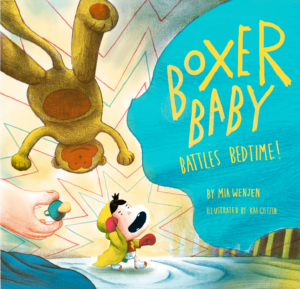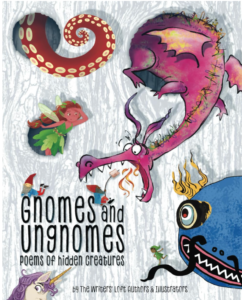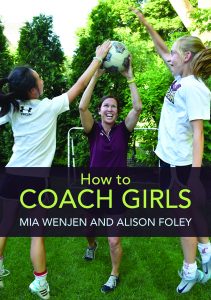Laying awake in bed at 2 a.m. desperately and unsuccessfully trying to soothe your newborn is difficult to bear. It’s a parent’s worst nightmare to have a child who’s clearly uncomfortable, and you can’t seem to do anything to help them feel better.
Unfortunately, every parent deals with this at some point during the challenging newborn phase. No mom or dad intuitively knows everything they need to do to keep their child comfortable all the time — it’s just not possible. As you grow as a parent, you’ll learn more about your baby’s likes, dislikes, and needs. These tips can help you soothe their discomfort in the meantime.
How to Help Your Gassy Baby
Gas is the most common reason for newborn discomfort, causing your baby to squirm and cry until they pass it. Try these ideas one at a time until you find what works to soothe your little one and help them feel better.
Burp Twice
Waiting until your baby is done eating to burp them leaves a long time for air to get trapped in their tummies. Instead, pause midway through the feeding for a burping session. Once they’ve passed some gas, you can finish feeding them. Just remember to burp them again after they’re finished.
Feed Sitting Up
The feeding position you choose has a significant impact on your baby’s ability to pass gas comfortably. Choose a method of feeding where their head stays above their stomach. A sitting-up position is probably your best bet if you have an especially gassy baby.
Find Better Bottle Nipples
If you bottle feed, the nipples and bottles you chose may be the cause of your child’s gas. To decrease the chances of excess gas, switch to a slow-flow nipple, which will lead to slow, consistent sucking and a lower intake of air. A built-in valve system can also release extra air from inside the bottle instead of allowing it to pass into your baby.
Change Up Your Diet
You breastfeeding mamas may be giving your babies gas from foods you’re eating. Take a good look at your diet to see if you’re eating gassy foods. If you can’t find the culprit, try keeping a food log, where you write everything you eat and document your baby’s reactions. You may be able to pinpoint the source of your baby’s gas.
Feed Before They Cry
Make it a priority to learn your baby’s hunger cues and feed them before they start to cry. A wailing baby will suck a lot of air which can get trapped in their little bodies. When you add the milk or formula of a feeding on top, it can make your newborn quite uncomfortable.
Give a Massage
Massages are the ultimate relaxation for tired adults and uncomfortable babies. If your baby continues to cry after you’ve fed and burped them, hold them on their left side on your lap and give them a massage. Rub their backs, arms, and legs. Once they’re relaxed, they’ll be able to pass gas more easily.
Do Baby Bicycles
If you’re not ready to try massage or it isn’t working, lay your baby on their back on your lap, the floor or the couch. Once there, grab one of their feet in each of your hands. Slowly move their legs to mimic the motion of pedaling a bike. This movement will loosen up the gas and help it move out with less pain.
Practice Tummy Time
Tummy time is essential for building strong back and neck muscles, but it’s also an excellent remedy for gas discomfort. The light pressure from lying on their stomach can ease the air out. Wait at least 20 to 30 minutes after their feeding to try this one.
Switch Formulas
Just like a breastfeeding mom’s diet can affect their baby’s gas, the kind of formula you use for bottle-fed babies can increase their gas discomfort. If you think your little one’s formula may be to blame, try switching to another brand like Kendamil or HiPP Formula.
Try OTC Remedies
Over-the-counter remedies can also help with your baby’s gas problems. Some moms swear by these, but you should consult with your doctor before trying them out. Gas drops and probiotics are a common choice, as well as low doses of sugar in the form of sucrose.
Other Calming Methods
Sometimes a baby’s discomfort comes from reasons other than gas, like colic or overstimulation. When you’re struggling to find a way to soothe your newborn, and you’ve ruled out the usual causes, try one of these calming methods.
Play White Noise or Gentle Music
Music is soothing for the soul. Play quiet and gentle music like lullabies or soft classical. White noise is another great option or even beach or forest soundscapes.
Keep Them Close
Sometimes babies just need to feel the warmth of a loved one to feel safe and comforted. Babywearing is an easy way to keep your little one close while still being able to move around and get stuff done. Another option is to snuggle them and practice some skin-to-skin. If you don’t currently have the time or ability to do one of those, swaddling is also quite effective, mimicking the closeness of your womb.
Go for a Walk or Drive
Gentle rocking and bouncing movements are also calming and comforting. Walk your baby around the block or take them for a ride in the car to soothe them for a while and help them fall asleep.
Reduce Stimulation
Just like adults, babies can get overstimulated. In these instances, move them to their crib for a while, turn off the lights and reduce as much noise as possible. You might be surprised how quickly this method can work if overstimulation is the root cause of your baby’s discomfort.
Every Baby Is Unique
Your baby is a unique little person, which is usually a great thing. However, it also means there’s no one-size-fits-all solution for soothing their discomforts. You’ll need to experiment to see what works well for your child. As they grow, a method that previously worked well may stop working. If there’s one thing that’s certain about parenting, it’s that nothing is certain. Keep this list of tricks handy, so you’re prepared for the next time your newborn is inconsolable.
p.s. Related posts:
The Only Baby Gear You Really Need
Hospital Bag Checklist When Having a Baby
Fun Things to Do with Your Baby
How To Properly Clean Baby Clothes
Getting Your Child to Sit in Their Baby Car Seat (and Stay There)
The Many Benefits of Baby Oil Massages
To examine any book more closely at Indiebound or Amazon, please click on image of book.
As an Amazon and IndieBound Associate, I earn from qualifying purchases.
Follow PragmaticMom’s board Multicultural Books for Kids on Pinterest.
Follow PragmaticMom’s board Children’s Book Activities on Pinterest.
My books:
Food for the Future: Sustainable Farms Around the World
- Junior Library Guild Gold selection
- Selected as one of 100 Outstanding Picture Books of 2023 by dPICTUS and featured at the Bologna Children’s Book Fair
- Starred review from School Library Journal
- Chicago Library’s Best of the Best
- Imagination Soup’s 35 Best Nonfiction Books of 2023 for Kids
Amazon / Barefoot Books / Signed or Inscribed by Me











